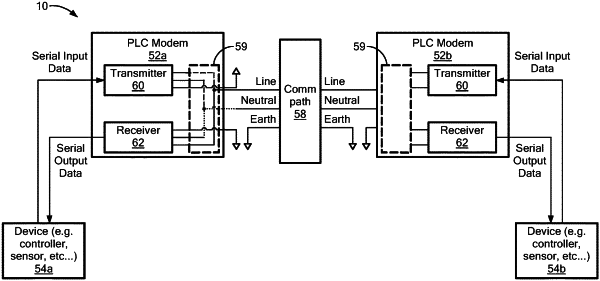| CPC H04B 3/56 (2013.01) [H04B 1/69 (2013.01); H04L 27/10 (2013.01)] | 20 Claims |

|
1. A communication system comprising:
(a) a device;
(b) a transmission medium; and
(c) a modem coupled between the device and the transmission medium, the modem configured to:
(c1) receive signals from the device and modulate the received signals for transmission over the transmission medium with a spread spectrum chirp transmitter as modulated spread spectrum chirp signals, transmit the modulated spread spectrum chirp signals as binary data by: (a) defining a bit time interval during which a single bit of data is to be communicated; (b) converting each data bit to a first signal waveform having a first binary condition in at least one portion of the bit time interval and having the remaining binary condition in other portions of the bit time interval; (c) integrating the first signal waveform to obtain a ramp waveform; and (d) providing the ramp waveform to a control input of a spread spectrum transmitter;
(c2) receive modulated spread spectrum chirp signals propagating on the transmission medium, demodulate the received modulated spread spectrum chirp signals and provide demodulated spread spectrum chirp signals to the device; and
(c3) meet quasi-peak (QP) signal levels.
|